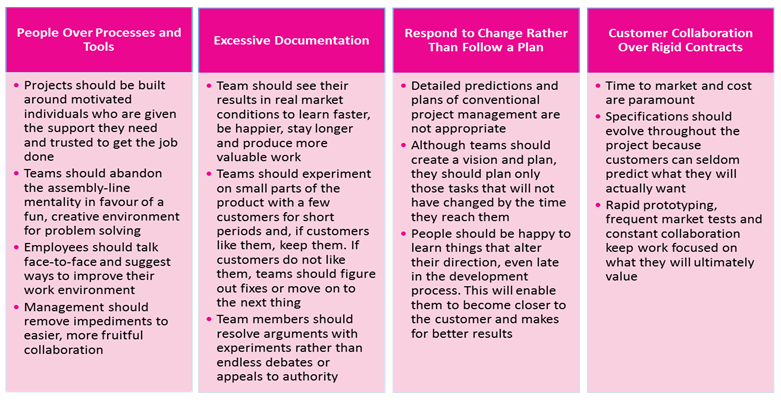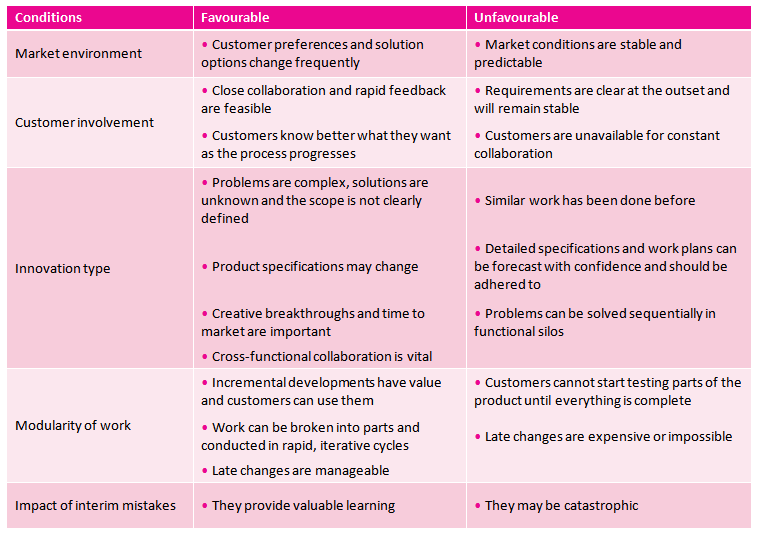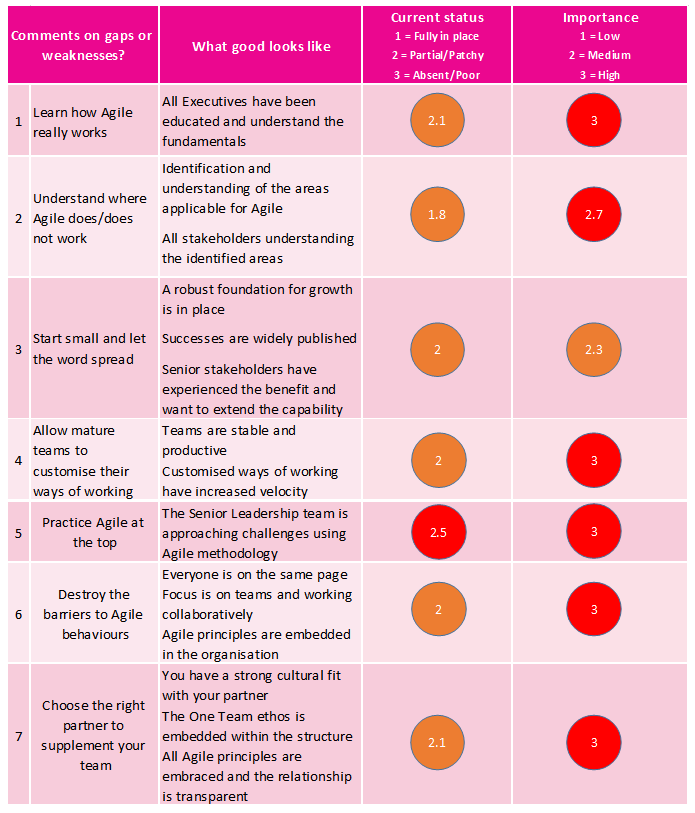Agile Special Interest Group Post-Meeting Report – July 2016

The Quantum Plus Agile Special Interest Group met on 14 July and discussed the following agenda items.
- How to implement Agile into your organisation
- Experience and lessons learned as well as some recommended approaches as to how to implement Agile into your organisation and capitalise on the benefits of Agile delivery
- Sourcing the right Agile partner for your organisation
- Exploring and discussing best practice methods of how to source the ideal Agile partner for your organisation
The session started with a discussion around how to implement Agile and a number of critical practices that should be adopted if the potential of Agile is to be capitalised on
- Learn how Agile really works
- Understand where Agile works/does not work
- Start small and let the word spread
- Allow mature teams to customise ways of working and in turn improve velocity
- Practice Agile at the top
- Destroy the barriers to Agile behaviours
- Alignment with the right partner to supplement team
The group discussed the requirements and their knowledge of what needs to be done, the constraints involved in getting the stakeholders to buy in, the importance of finding the right Agile partner for successful implementation and the changes that need to take place in project management in order to buy into the concept behind Agile and business value. It was felt overall that, at present, stakeholders do not fully understand the mechanics of Agile methodology and how the organisation, as a whole, needs to buy in. This silo way of working inhibits change and creates frustration.
Key Agile Values and Principles
The group discussed the key Agile values and principles outlined below, highlighting how important it is that all stakeholders/Executives understand these concepts.

The discussion then moved on to where Agile works and does not.

Start small and let the word spread
When one team is working well, this can actively be used to promote to other teams. A number of the participants talked about how this had happened in their organisations and the importance of having a spokesperson to talk about the benefits.
Key considerations before promoting Agile are to learn lessons, ensure you have some successes before trying to roll out more widely and grow gradually but with confidence
Allow mature teams to customise ways of working
Before beginning to modify or customise Agile, create a stable team. It is important to avoid beginning with part-time assignment to teams or with rotating membership. Data shows that stable teams are 60% more productive and 60% more responsive to customer input than teams that rotate members. Over time, experienced practitioners should be permitted to customise Agile practices. If a team wants to modify particular practices, it should experiment and track the results to ensure that the changes are improving rather than reducing customer satisfaction, work velocity and team morale.
Alignment with the right supplier
The selection process for an Agile partner needs to place greater emphasis on assessing the cultural compatibility.
- Cultural fit comes from Agile behaviours
- Teamwork
- Collaboration
- Large suppliers do not work in an Agile way - they cannot support Agile aspirations; they just do not work that way
The group then discussed how existing contracts can potentially drive the wrong behaviours and how legacy contracts are not being changed to Agile thinking.
The group then discussed where they viewed their organisation against the criteria outlined below.

In conclusion, the results were close. It was noted that the attendees were from retail organisations and it would be interesting to see how other sectors have found these challenges - would it be very similar or very different?
Session 2
Agile Sourcing – Getting the right Agile delivery partner
In this session, the group looked at different ends of the spectrum for a sourcing approach.
Traditional
- Arm’s length
- Single set of requirements
- Defined in advance
- Contract focused
- Clarify everything
- Clear accountability
- Mechanic evaluation
- Hard measures most important
- Staged process
- Lots of preparation
- Best match to requirement and other objectives
Collaborative
- Joint working
- Requirements evolve
- Contract basics - remainder of contracts filled in between parties
- Evaluation centred on critical success factors more than pre-set deliverables
- Process develops the details
- Cost, risk and capability tested along the way
- Best of variable solution/commercial offers
Experimental
- Trust dependent
- Process discovers requirements
- Contract basics to transact
- Right to additional work earned iteratively
- Performance measured in Agile terms
- Quick start
- Inherent risks accepted
- Able to change scope and delivery dynamic
- Business value justifies ongoing budget
The group discussed where their organisations sat within the three areas and it was decided that typically it was not one category but a mixture of all three.
It was agreed that Collaborative and Experimental were the two approaches best suited to finding an Agile partner.
There are some key challenges to address when choosing a partner:
- Project cost is uncertain
- Paying for unused deliverables – we would not pay a bid team
- Co-operation between suppliers that are protective of their own ideas
- Productivity
- Managing multiple suppliers
- Client staff unused to collaboration
- Supplier seeks traditional model
- Terminating a project which is delivering but missing the objective
Example valuation criteria that can be used when selecting a partner:
- Cultural fit
- Demonstrate understanding of client’s IT
- Relevant application/package experience
- Sprint performance
- Process and tooling
- Added value
- Commercial and contractual compliance
How many Agile partners?
Two or more Agile partners – the ideal where scale permits
- Agile work is divided
- Permits comparison
- Allows for gradual transfer of work to whichever Agile supplier proves more successful
- Provides ongoing competitive tension
Single external Agile partner – most common approach currently
- Allows full commitment from a single partner
- Minimises supplier management costs
- May be necessary for smaller scale organisation
- Does not allow the performance of the Agile supplier to be tested
Decisions should be made as part of a wider Agile sourcing strategy
- Consider various strategic options alongside the key dimensions of the sourcing strategy
- Define optimum target sourcing model which is agreed by all stakeholders
- Ensure that the appointment of Agile suppliers takes place within the context of the agreed sourcing model
The group concluded by stating that selecting the right partner and organisational alignment were key factors in successful implementation and delivery. Agile innovation has revolutionised the software industry. The greatest impediment is not the need for better methodologies, evidence of significant benefits, or proof that Agile can work outside IT. It is the organisational change that is required to ensure the benefits.
Quantum Plus would like to thank all participants for their contributions on the day. If you would like to attend the next session, receive any further information on the Agile Special Interest Group or how Quantum Plus can help you with your Agile ambitions, please contact Lesley Michaelis at lesley.michaelis@quantumplus.co.uk.



